After reviewing the Hyundai Ioniq 5 Max not too long ago, I said it’s the best EV in Malaysia for less than RM300,000. It has a head-turning retro-modern design, a spacious interior, powerful performance and it’s packed with loads of tech. However, creeping closely behind is its cousin, the Kia EV6 which is priced just slightly over RM300,000 in Malaysia. Is the EV6 a better car than the Ioniq 5 and other more expensive EV options in the country? Read on to find out in our Kia EV6 GT-Line review.
Same EV platform, different execution
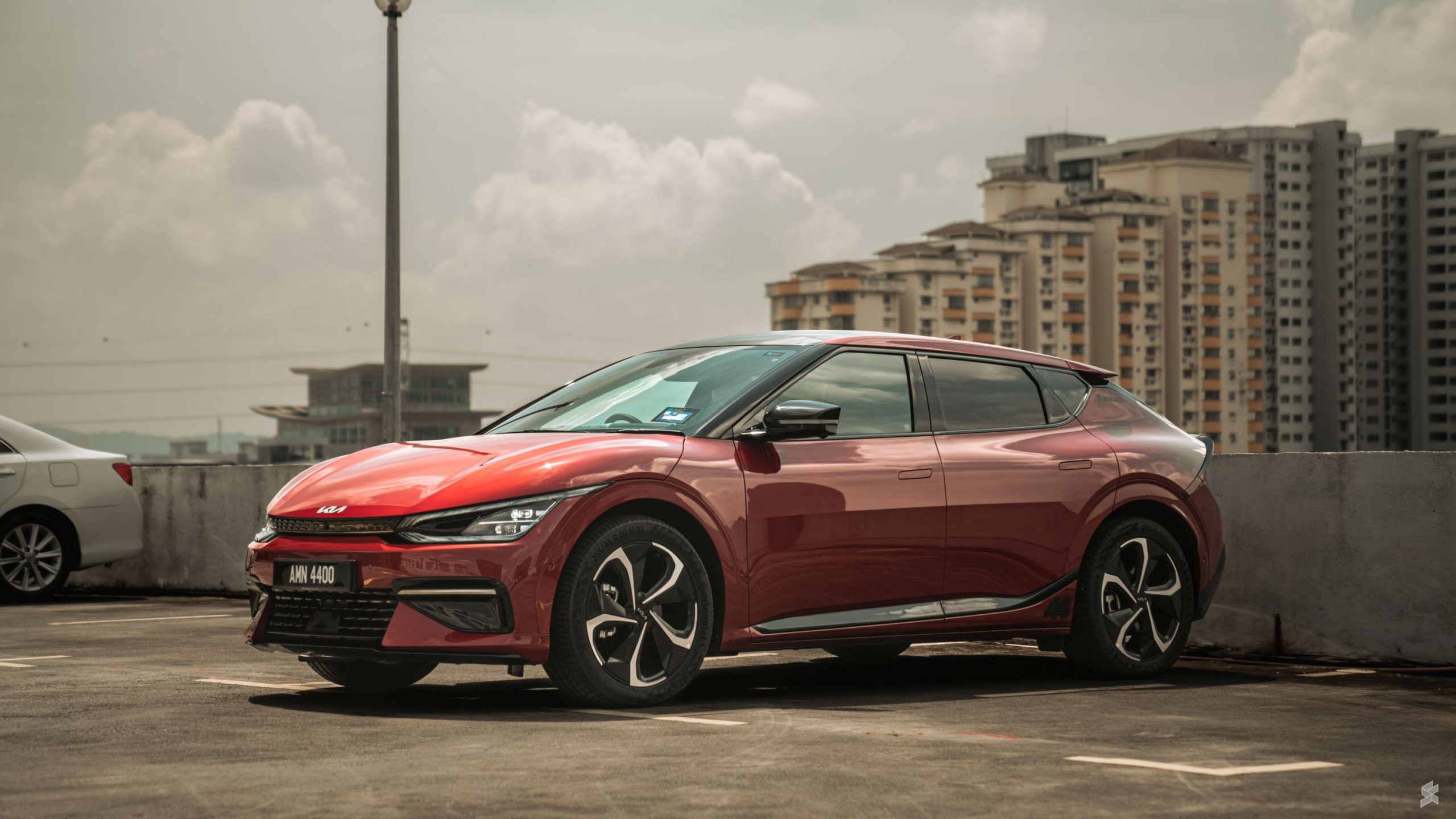
For starters, the relationship between Hyundai and Kia is just like Oppo and OnePlus. Both brands are under the same group and they often share similar hardware and software. However, both brands have their unique approach when it comes to design and execution.
Although the Kia EV6 uses the same EV-dedicated eGMP platform as the Hyundai Ioniq 5, the wheelbase is shorter at 2,900mm (Ioniq 5: 3,000mm) but the overall length for the EV6 (4,695mm) is slightly longer than the Ioniq 5 (4,635mm) by 60mm.
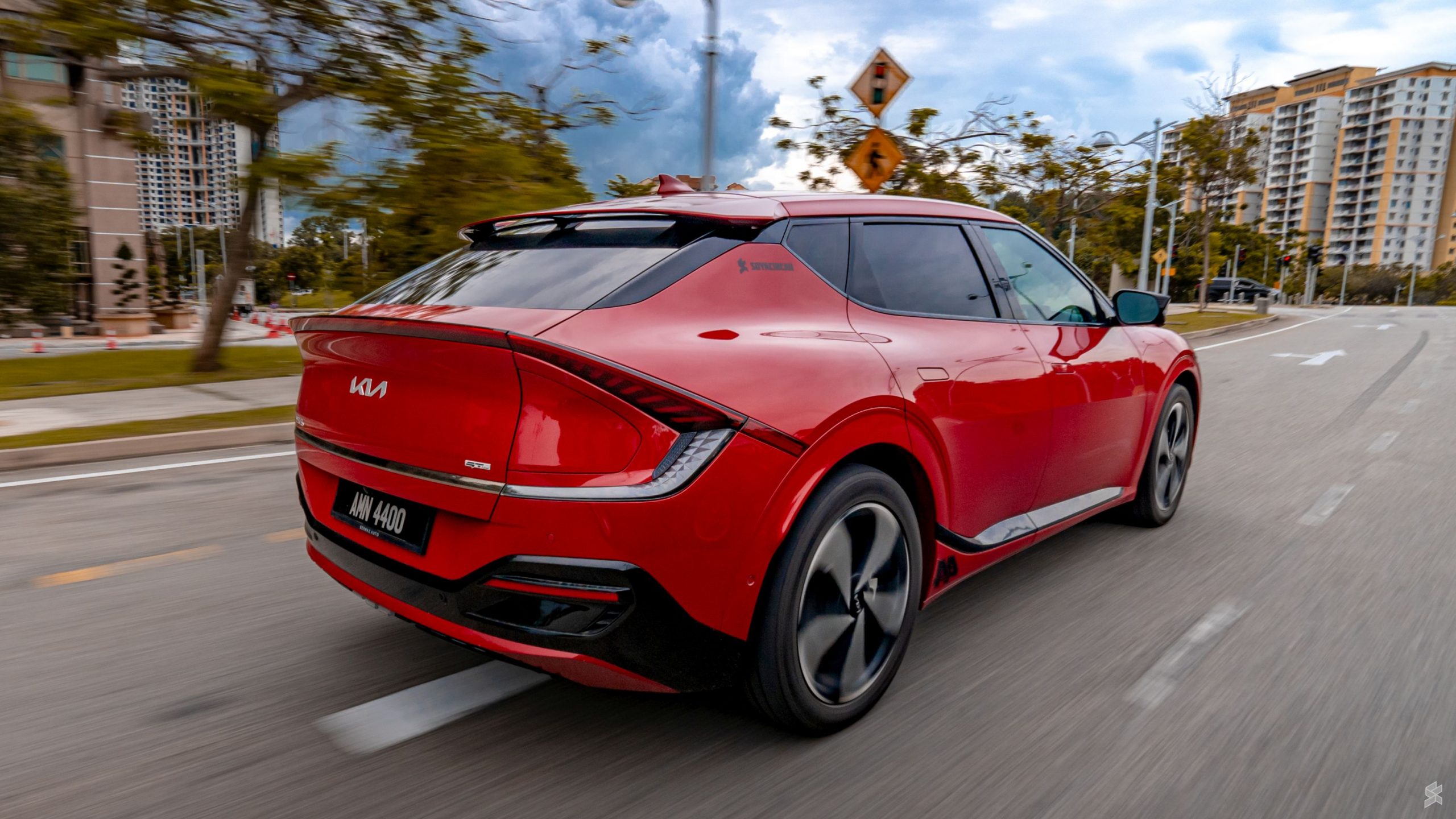
While the Hyundai Ioniq 5 looks more like a boxy hatchback SUV, Kia has made the EV6 look more sporty with a lower roof. It has a curvaceous body without any SUV-ish plastic claddings around the sides. In fact, the Kia EV (1,550mm) is 97mm shorter than the Hyundai (1,647mm) which is quite significant.
The best view for the EV6 is from the rear as it gets a shooting brake-like design and the protruding hips of the rear wheel arches remind me of the TVR Sagaris. I like the full-width LED cluster for the rear lights and hidden signal indicators around the silver trim at the edges. Even the charging port is cleverly hidden behind a panel at the rear right corner.
The front looks sleek and it does look like a modernised Kia Stinger with slimmer headlamps. Similar to the Ioniq 5, the EV6 still gets flush door handles and it also rides on 20” 255/45R20 wheels that come with a layer of foam to reduce tyre noise.
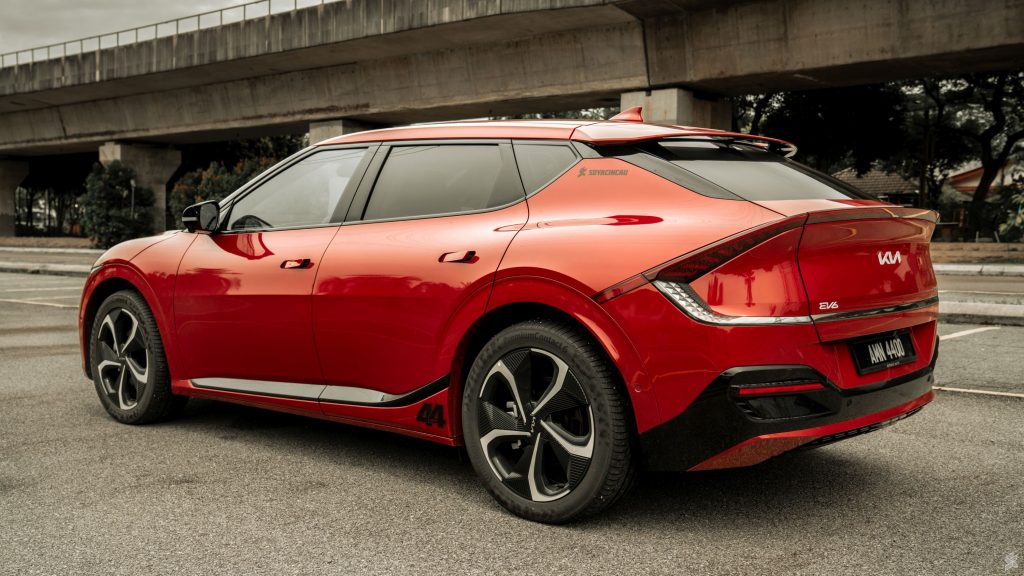
The EV6 GT-Line in Malaysia is an AWD model equipped with twin motors producing a total maximum output of 320hp and 605Nm of torque. That’s 20hp more than the Ioniq 5 Max that’s sold in Malaysia. The EV6 also gets a larger 77.4kWh capacity battery that claims to deliver a driving range of up to 506km on a single charge based on the WLTP cycle. That’s almost 80km of extra rated range than the Ioniq 5 Max which is equipped with a smaller 72.6kWh battery.
It’s worth highlighting that Hyundai Sime Darby Motors Malaysia has released an updated Ioniq 5 Max 2023 but it still retains the same power output and battery capacity as last year’s model. In other markets, the high-spec AWD Ioniq 5 now gets slightly more power and a larger battery which are similar to the EV6.
EV6 offers a more driver-focused interior
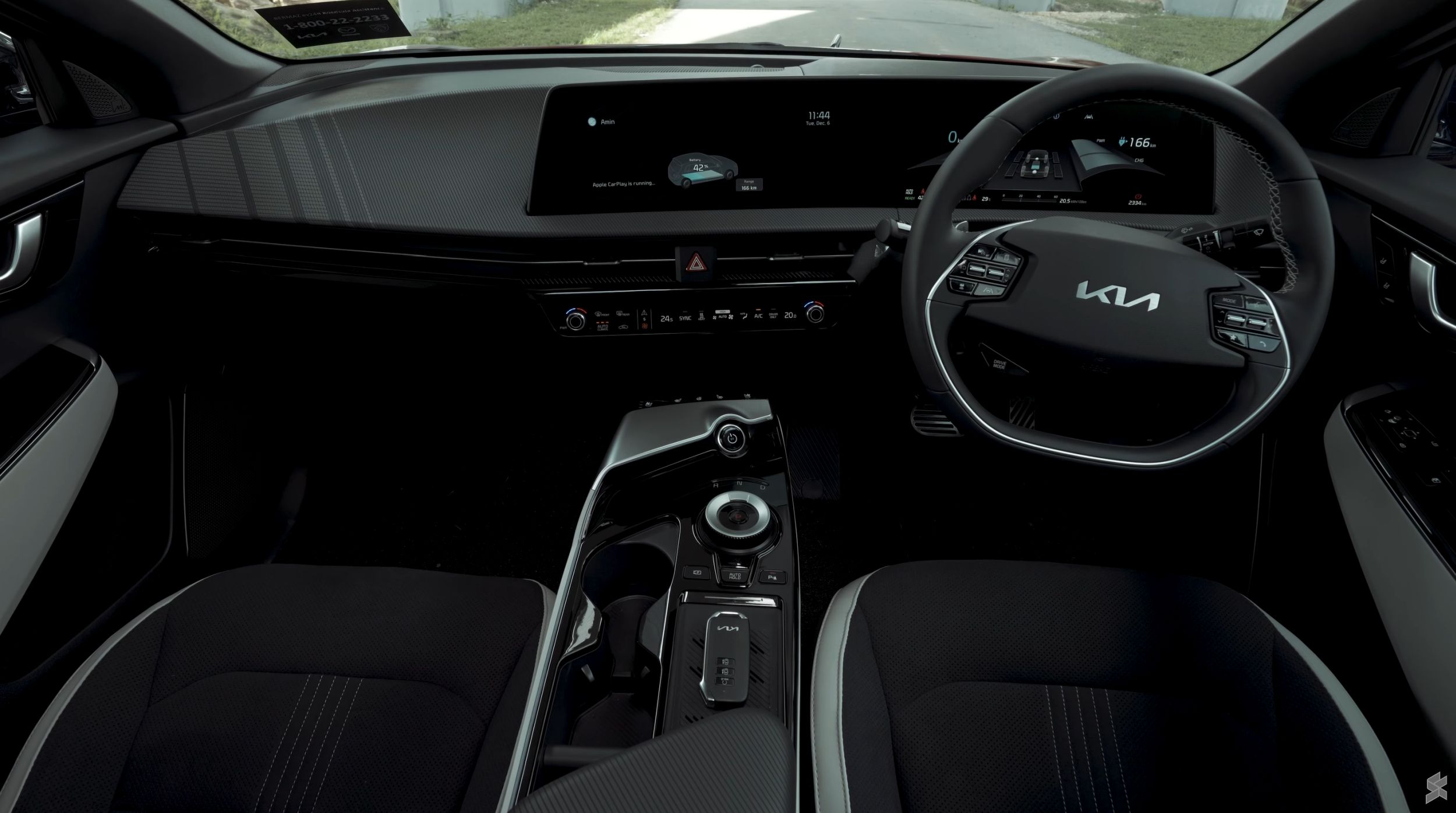
Stepping inside the EV6, you’ll find that it gets a more driver-centric cockpit which is a contrast to the Ioniq 5 which offered a greater sense of space with its lounge-inspired interior. There are still two massive 12.3” screens up front but the bezel is now black and curved slightly towards the driver, which is a good thing. The UI and digital instrument cluster looks exactly the same as the Ioniq 5 except for some minor differences in chimes and animation during start-up and powering down.
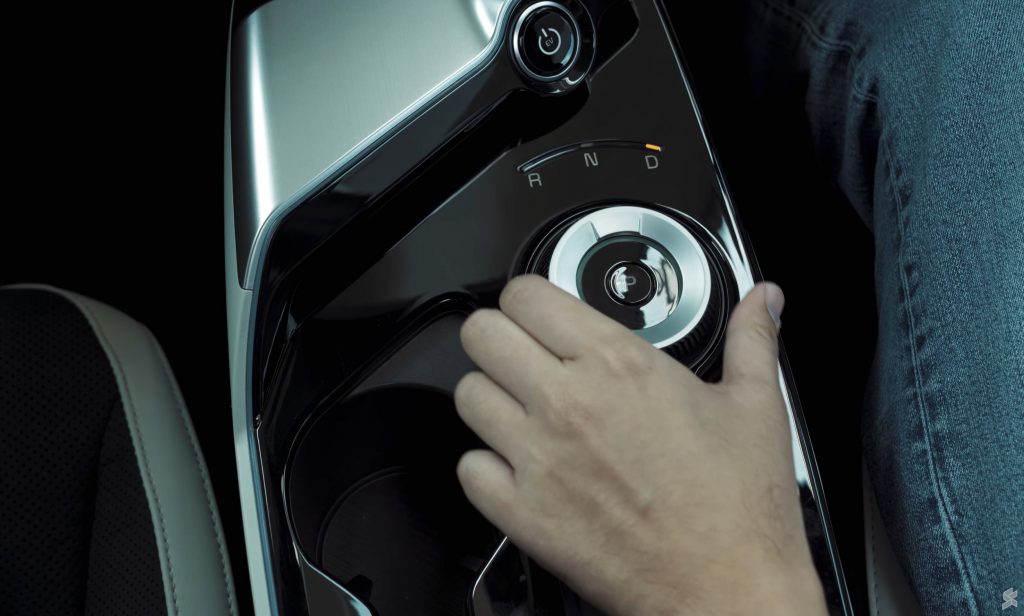
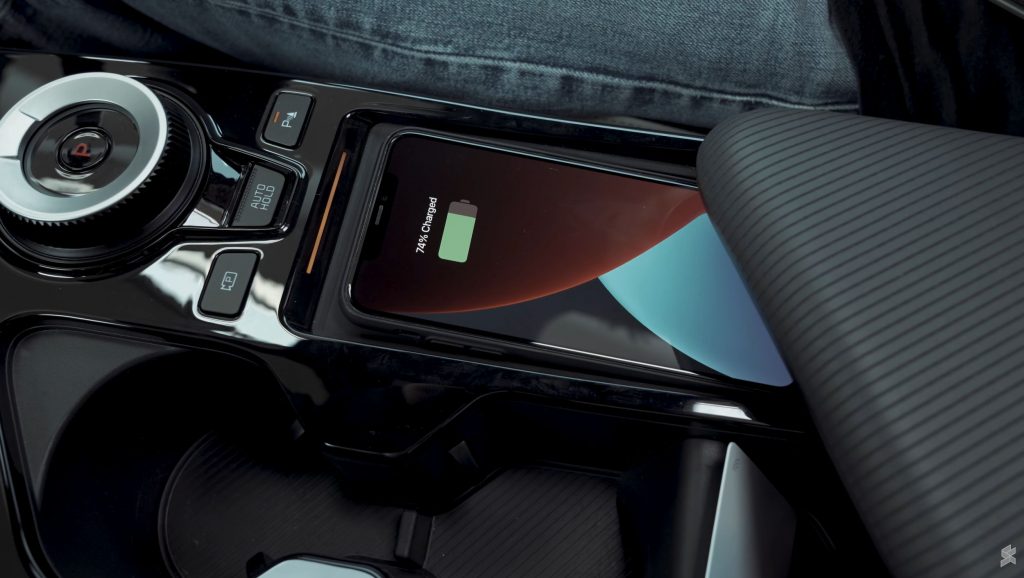
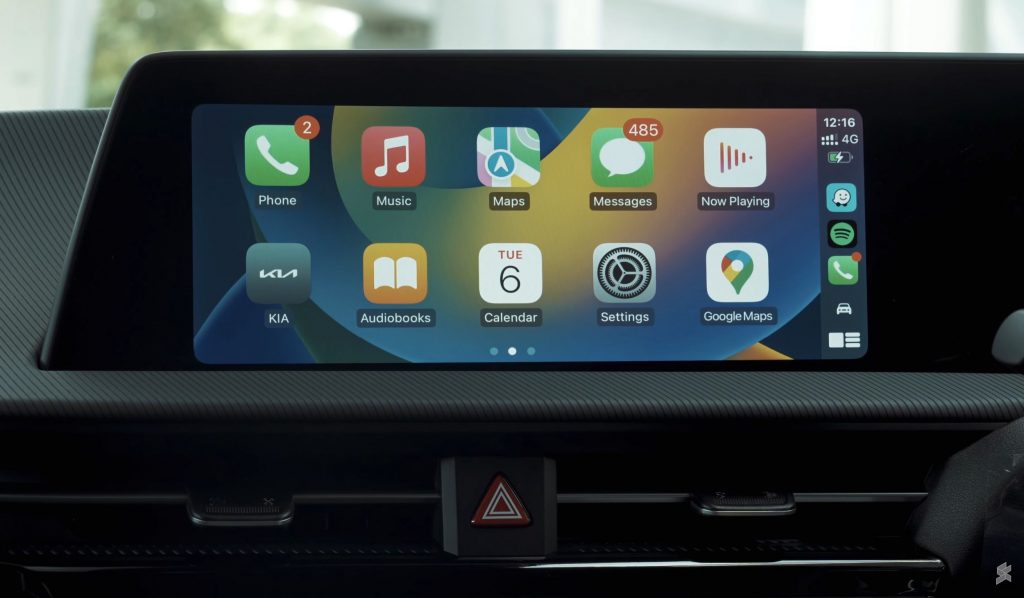
Instead of a movable centre island with deep open space, the EV6 gets a floating centre console which houses the rotary drive selector, a power button, a wireless charging pad and touch controls for the heated and ventilated seats. The rotary dial on the centre console of the EV6 is easier and more intuitive to operate than the Ioniq 5’s twisty drive selector stalk located behind the steering wheel.
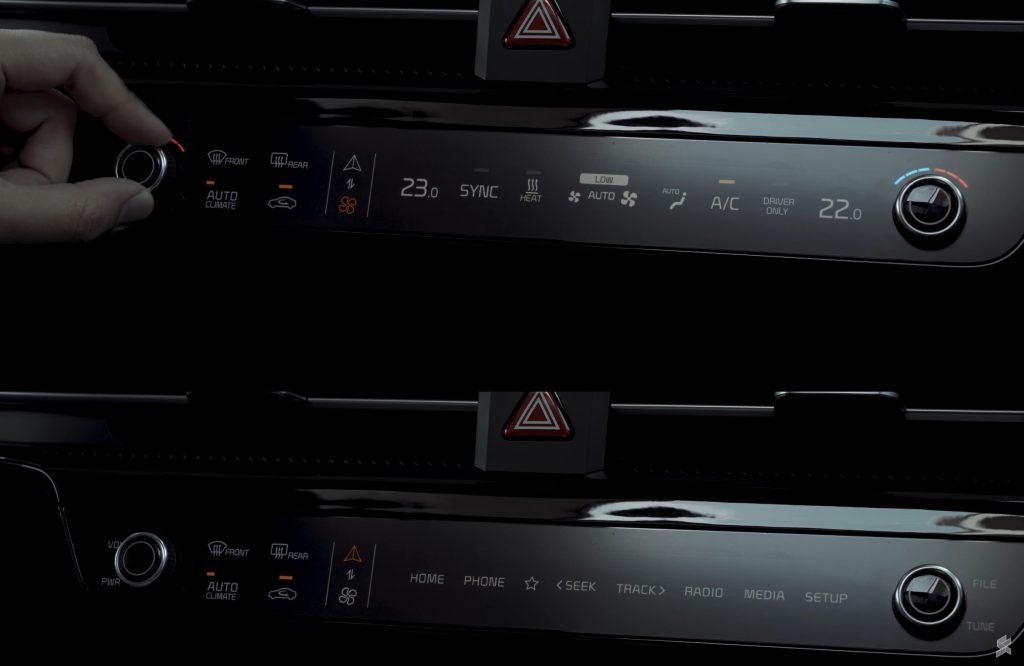
Right below the central aircon vents, the EV6 gets a single-stack panel which has a combination of touch buttons and physical knobs for both climate control and media controls. The labels for the knobs and the main controls are actually touch screens which can change depending on which mode you’re on. This looks impressive at first glance but I would rather have separate controls for better usability while driving. Fortunately, this isn’t a huge problem as you can leave it at climate controls by default and you can adjust music playback from the steering wheel instead.
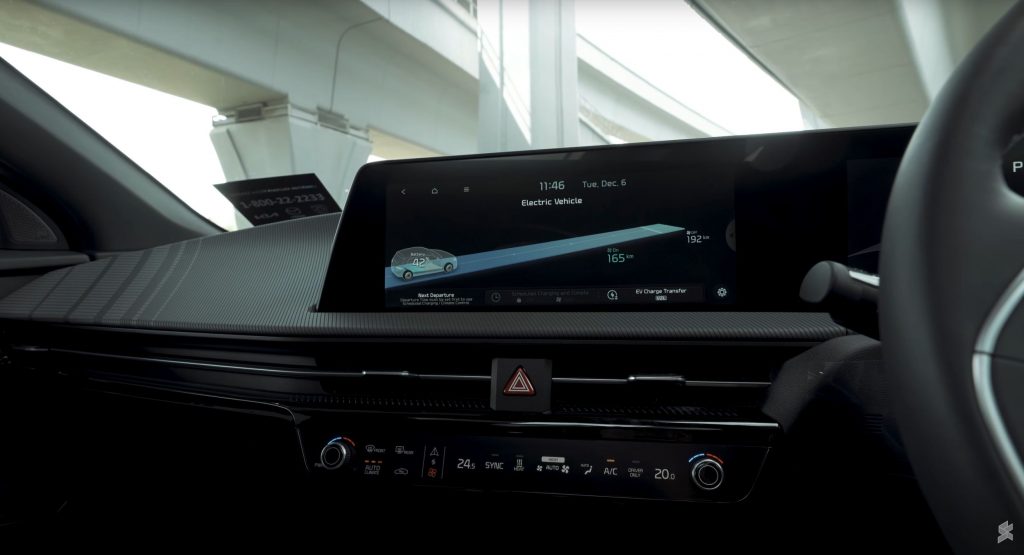
Despite feeling less airy, the EV6 still provides ample practical storage space including a large compartment under the floating centre console and a deep glovebox that’s large enough to fit a 14” Asus Zenbook 14 laptop. Similar to the Ioniq 5, it supports Apple Car Play and Android Auto but it’s only wired via a USB-A port. However, the other 4 ports in the EV6 are using USB-C ports which is an upgrade over the old USB-A ports offered on the Ioniq 5.
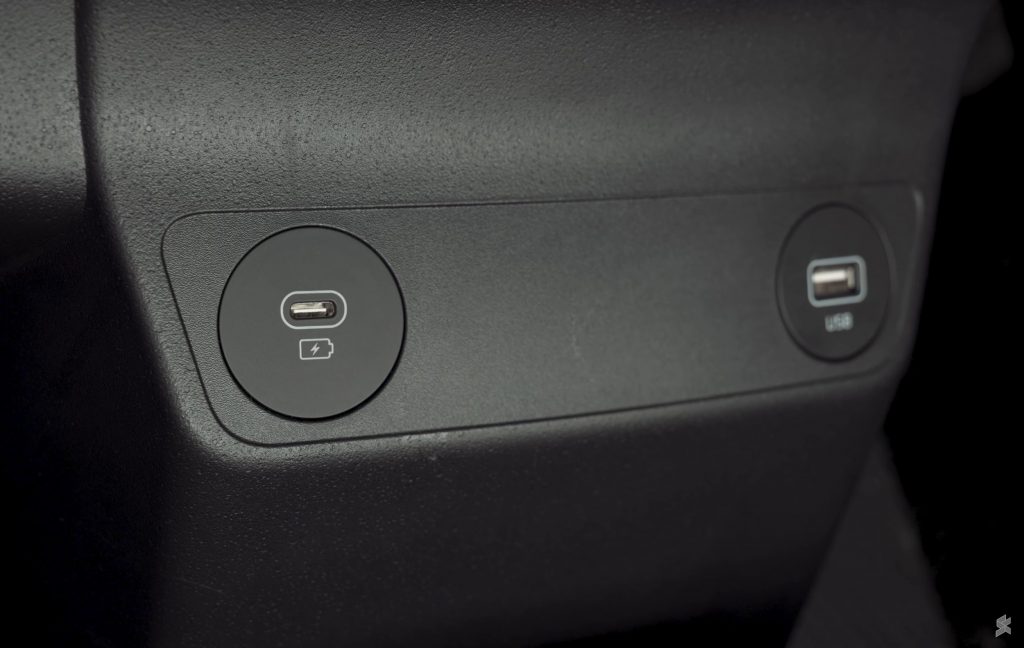
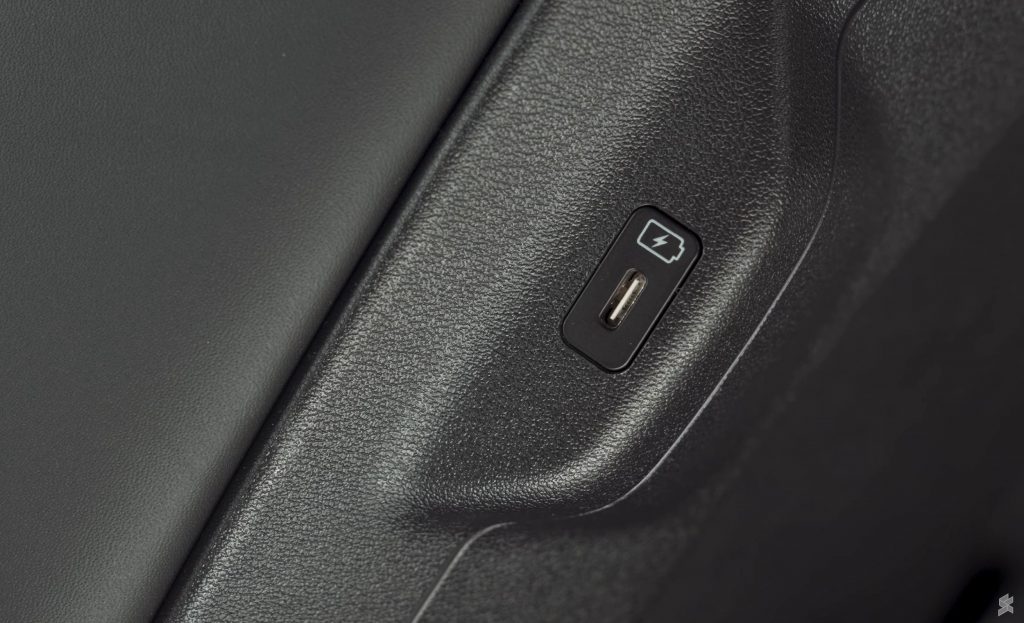
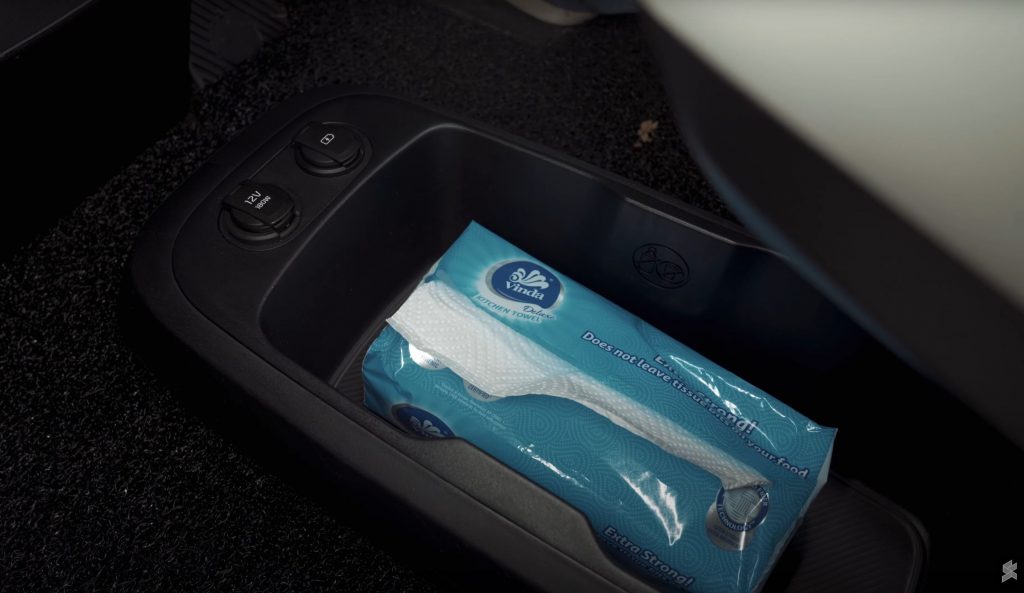
In terms of build quality, the EV6 feels more premium as it has more leatherette material on the door trims and clever use of textures and design on the dashboard. Overall, the EV6 feels more expensive on the inside than the Ioniq 5 which has more plasticky materials around the front cabin and on the door trims. The biggest criticism of the EV6’s cabin is the use of scratchy plastics for the rear panel of the front two seats and the lack of ambient lighting for the storage area underneath the floating centre console.
When it comes to driving visibility, the pillars seem to be thicker than the Hyundai while the dark tinted rear glass with its sloping roofline does impede rear visibility. Fortunately, there are pretty good 360-degree surround cameras and sensors which makes parking a breeze. Despite the lack of a rear wiper, the EV6’s sloping roofline and tail design surprisingly do a better job than the Ioniq 5 in keeping the glass clean.
Less space but with more practical features
Due to the lower height of the car, there’s noticeably less headroom in the EV6 compared to the Ioniq 5. If you’re a tall driver that prefers a higher riding position, you might find your hair touching the headliner or brushing on the upper frame of the window when you try to tap your Touch ‘n Go card at car parks or collect your order at a drive-thru. You can tell that this car is meant to be driven with a lower seating position.
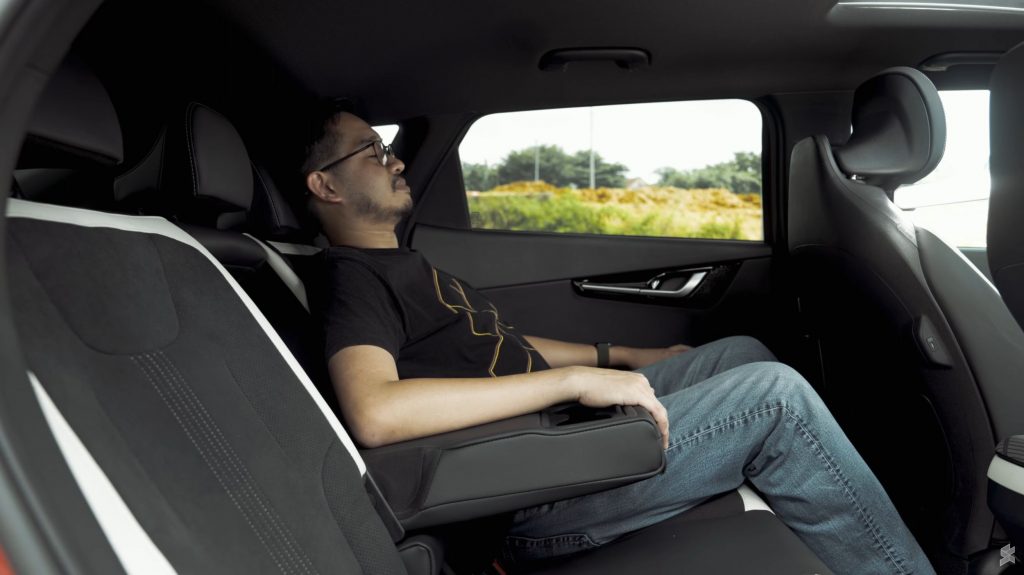
Rear occupants may still find ample leg room which is made better with a flat floor. Because of the lower roof and lower-mounted seats, passengers with longer legs may find it quite a squeeze to tuck their feet underneath the front seats.
For rear storage, the boot gets almost 500 litres of space which is more than enough for most family road trips. On paper, that sounds good but the floor is actually quite high and the tonneau cover does get in the way if you’re storing your luggage upright on its sides. Since the rear glass is already heavily tinted, you can keep the bulky tonneau cover in the underfloor storage of the boot to maximise the boot space. This is something you can’t do on the Ioniq 5 Max as the subwoofer creates a huge centre hump in the underfloor compartment.
Another nice added feature is the quick-release levers in the boot to easily fold the rear seats down, making IKEA trips a breeze when loading long items.
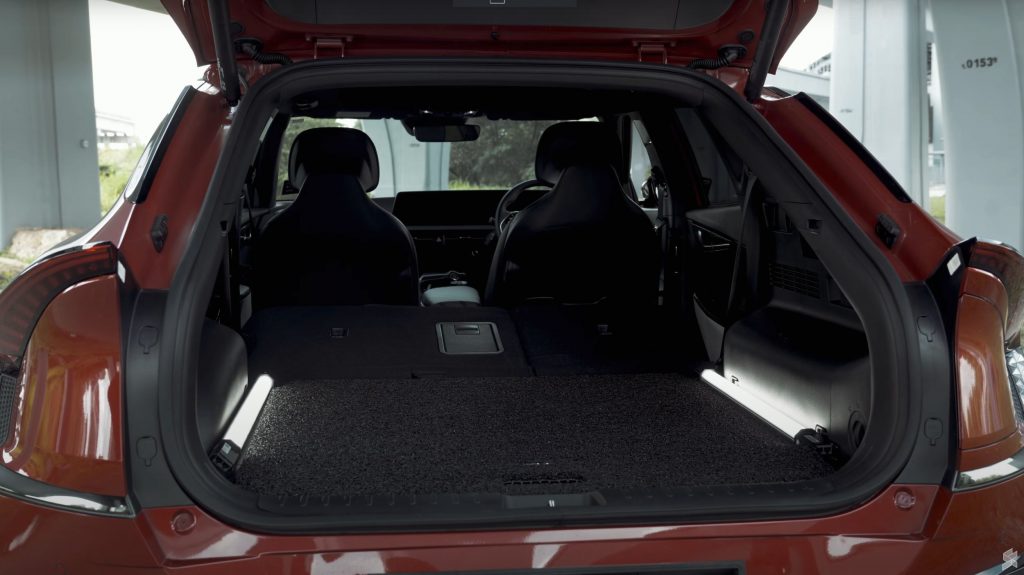
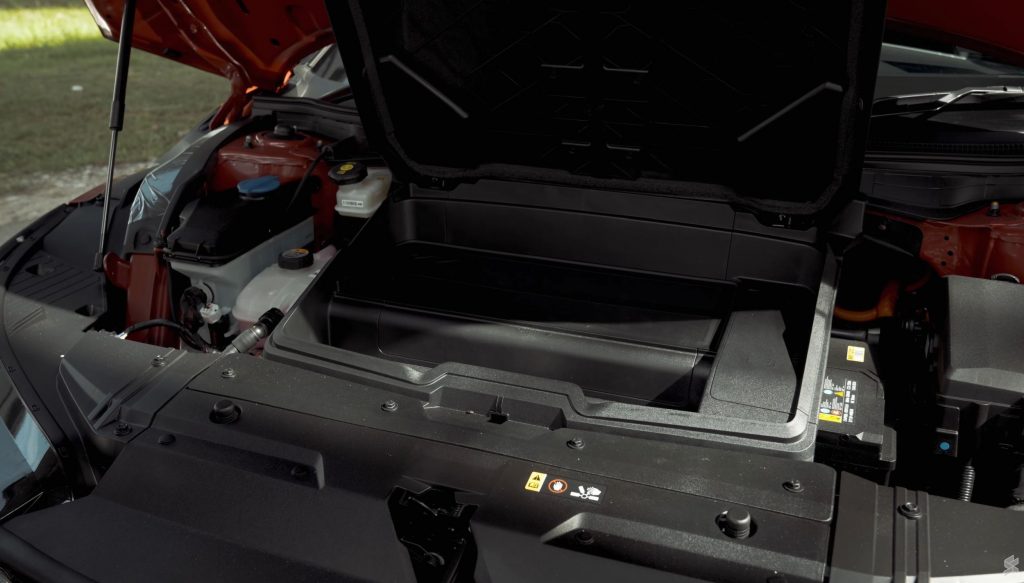
The EV6 also gets a front trunk (aka frunk). For the AWD model which has a front motor, the frunk gets an odd shape and with just 20-something litres, this is practically useless. You’re better off putting things in the boot which is much more convenient to access.
The EV6 does lose out on a couple of features that are offered on the Ioniq 5 Max. This includes power sliding rear seats, “boss switches” to adjust the front left passenger seat, built-in privacy shades for the rear doors and extra lower leg support cushion for the front two seats. On the flip side, the EV6 does come with a sunroof, which isn’t offered on any variant of the Ioniq 5 in Malaysia.
Just as quick and efficient as the Ioniq 5
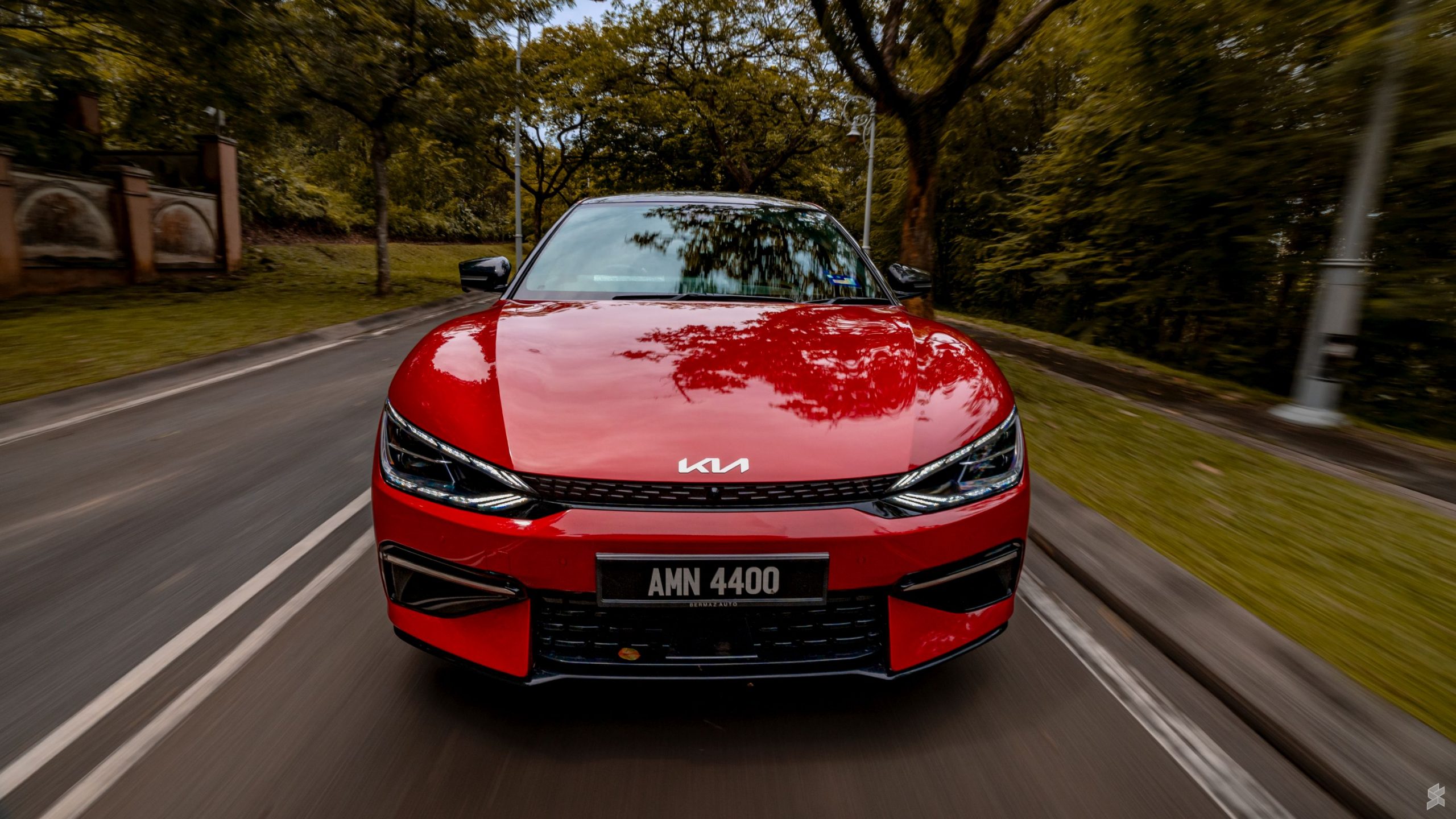
With 320 horses and 605Nm of torque available on tap, the EV6 is insanely quick and responsive with a 0-100km/h time of 5.2 seconds in Sports Mode. For most daily drives, Eco mode may offer a more subdued acceleration but it is plenty quick to get up to the national speed limit and to manoeuvre through traffic jams during peak hours.
Despite being similar to the Ioniq 5, the EV6 has a slightly firmer ride which I like. The Hyundai Ioniq 5 has a softer suspension which is tuned for comfort but the EV6 just feels more planted for a sportier drive. It feels more settled over bumps while providing a comfortable ride for long-distance trips.
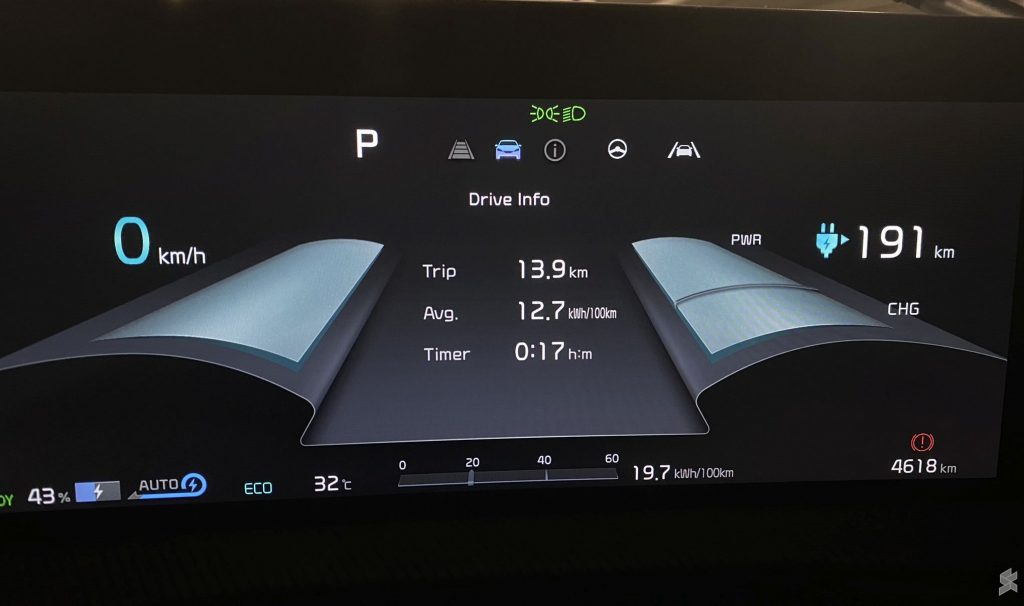
On the EV6, I got an average efficiency of 14-16kWh per 100km if I drive normally to work during peak hours. The most efficient drive I’ve got so far is 12.3kWh per 100km achieved during peak morning rush hour.
Contrary to popular belief, EVs are actually more efficient during traffic jams as it uses regenerative braking technology to recoup lost energy. For spirited driving with constant 3-digit speeds in normal mode, I get anywhere between 18-22kWh per 100km which is still pretty decent considering the performance and the weight of this car.
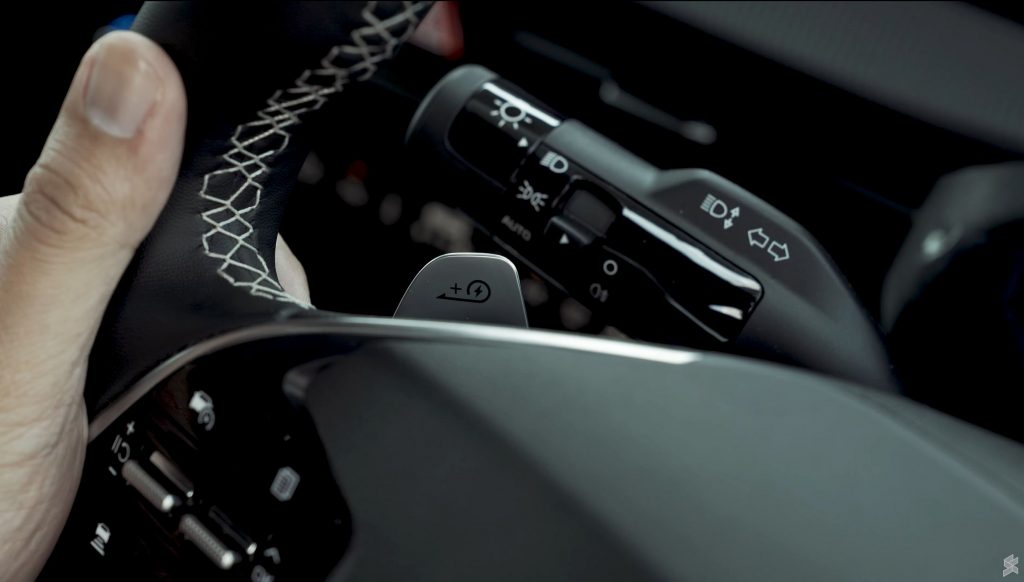
By maintaining an energy efficiency of about 16kWh per 100km, the EV6 should be able to deliver about 450-480km of driving range on a full charge. If you drive this constantly above the speed limit, you can expect the actual range may drop to around 350-380km.
Unlike most EVs in the market, both Hyundai and Kia offer paddle shifters which let you adjust the regenerative braking level on the fly instead of digging thru the menus on the touch screen. The i-Pedal mode which is essentially a single-pedal driving mode is the best way to drive the car during crawling traffic jams. The motors will gradually slow the car down instead of applying the brakes as you gently lift your foot off the accelerator pedal. Not only it would prolong the life of your brake pads but it charges back the battery for greater power efficiency.
If you prefer the sensation of driving a normal petrol car, you can set it to regenerative braking level 3 which will slow down the car but you’ll still need to apply the brakes to come to a complete stop. There’s also an auto regen mode which dynamically adjusts the regenerative braking levels depending on the distance of the car in front of you and road conditions. You can also stop the car entirely with regen braking by pulling the left pedal. As a result, you’ll hardly ever need to step on the brakes unless it is an emergency stop.
All the safety and advanced features you’ll ever need
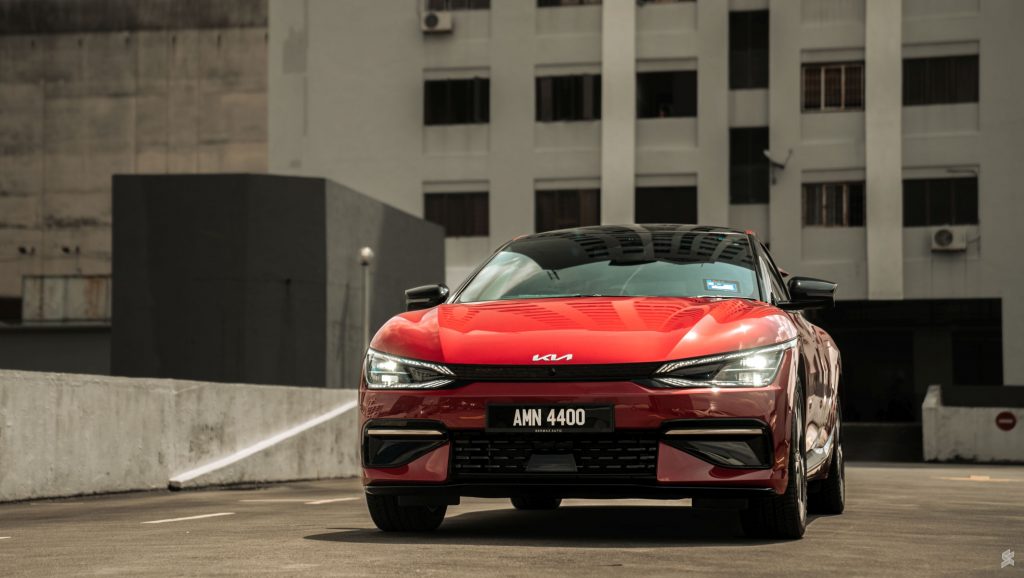
As you would expect from a modern car, the EV6 is packed with all the advanced safety features that you’ll ever need. It has a total of 7 airbags and it comes equipped with an array of sensors including radar and cameras. Besides your normal Antilock braking system (ABS) and vehicle stability control (VSC), the EV6 has autonomous emergency braking (AEB), lane keeping and centering assist and rear cross-traffic alert.
The smart cruise control with stop & go support makes daily commuting during bumper-to-bumper crawls so much more pleasant. Combined with lane centering and lane-keeping assist, the car practically drives itself (with your hands on the wheel, of course) while maintaining a safe distance from the vehicle in front of you. All of these features can be switched on instantly from the steering wheel and Hyundai/Kia has done a good job of making the feature easy to understand for new drivers.
Similar to the Ioniq 5, the EV6 also has a blind-spot view monitor which provides a rear camera feed of either your left or right lanes on the instrument cluster when you use the signal indicators. To keep your occupants safe, there’s also a safe exit assist which alerts you if a motorcycle or car is approaching while you open the door. It also warns you if a vehicle is approaching when you reverse out from a parking lot.
Insane fast charging and versatile V2L feature
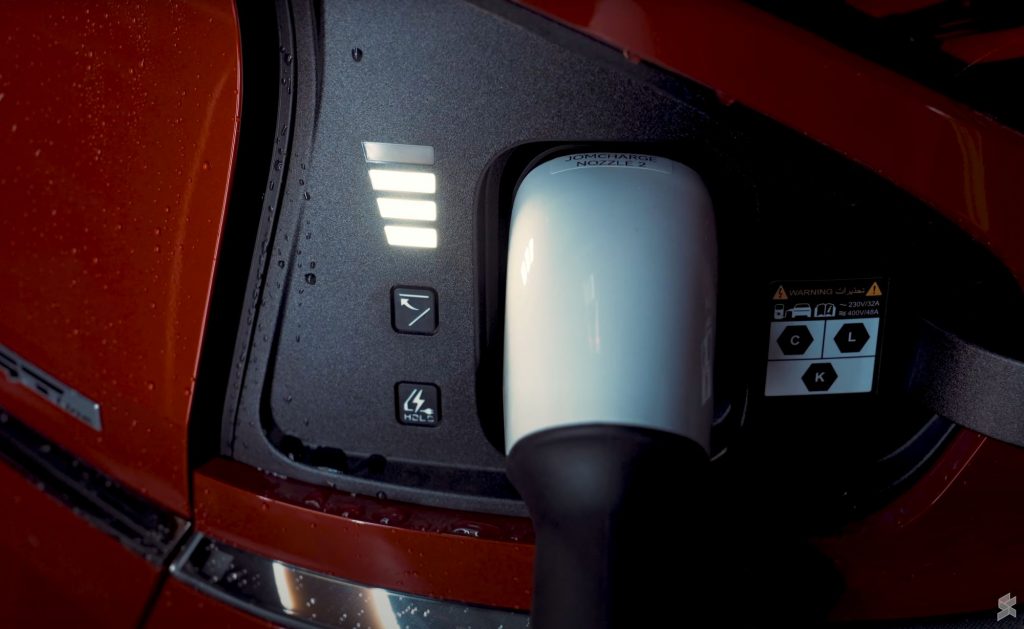
Built on an 800V architecture, the EV6 has one of the fastest EV charging rates beating the likes of Tesla, BMW and Mercedes which are based on a 400V architecture. When it is hooked to a 350kW DC charger, Kia claims that it can do 10-80% charge in just 18 minutes.
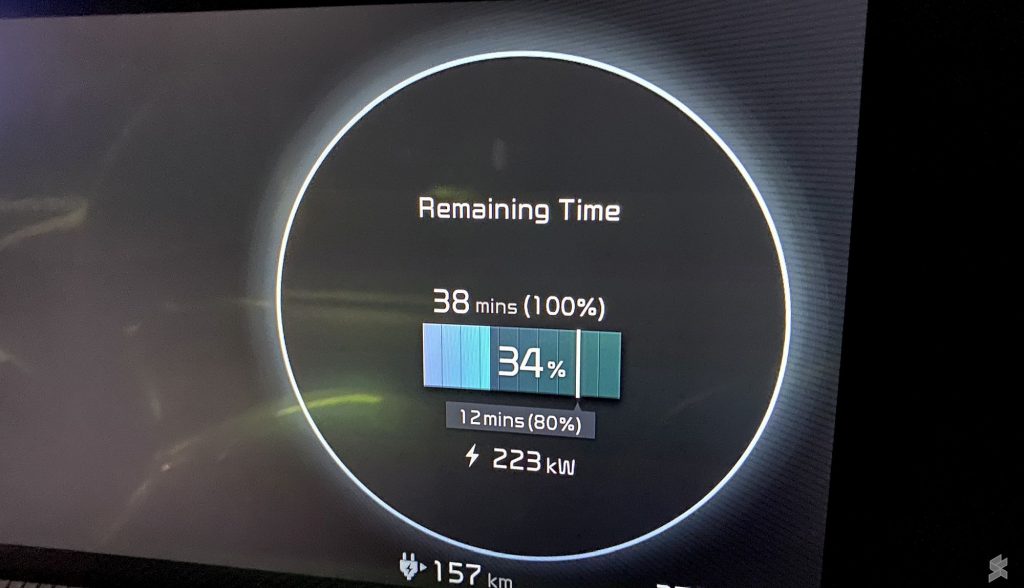
In reality, the EV6 maxes out at around 235-237kW and we can get 20-80% charge in under 16 minutes using ultra-fast DC chargers from Gentari and ChargEV. When plugged into a 50kW DC Charger, the EV6 gets from about 37-80% in about 30 minutes.
For most daily commutes, it is better to use slower AC charging which is cheaper and better for the battery’s lifespan. With 11kW AC charging, 10-100% charge is rated to take 7 hours and 20 minutes. From my own experience, I managed to get from 25-60% in about 3 hours from an 11kW AC wall box.
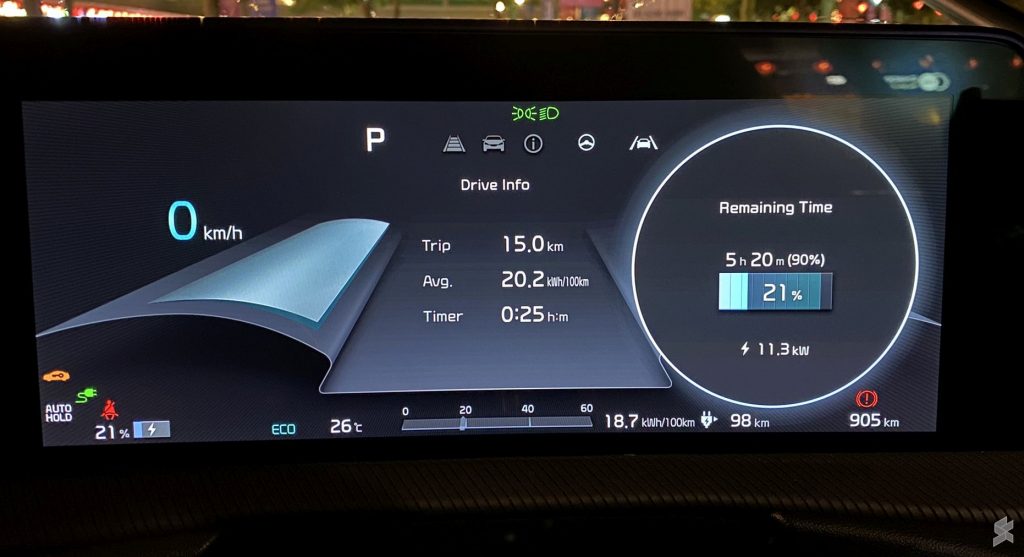
For emergencies, Kia has also provided a Level 1 3-pin granny charger that you can plug into your regular home power outlet. When it is configured for 10Amps, it outputs 2.2kW which can push approximately 20% of charge with over 8 hours of overnight charging.
Another useful feature is Vehicle-to-Load (V2L) which essentially converts the EV6 into a giant power bank. The provided V2L adapter lets you hook up any home appliance with a UK standard 3-pin plug to the car’s charging port and it can support a maximum output of 3.6kW. If you need to charge your laptop or use a hair dryer, there’s even a 3-pin socket inside the car located below the rear passenger seats.
It can even park itself
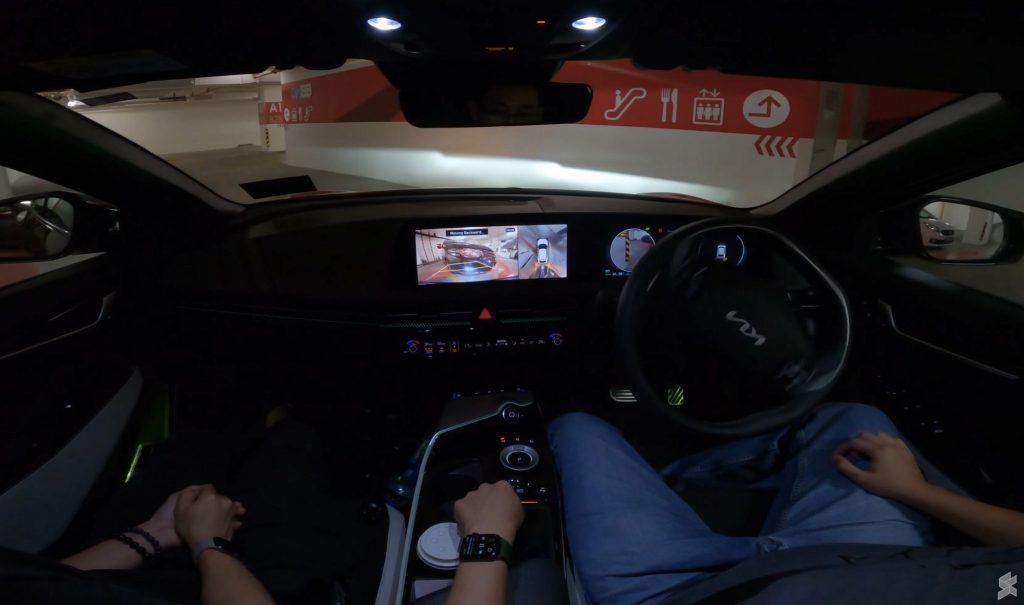
The biggest party trick is remote smart parking assist. Whether you’re inside or outside the vehicle, you can set the EV6 to park itself by pressing and holding the Parking/View button on the centre console and following the instructions on the screen.
The feature is impressive as it can detect parked vehicles, pillars and obstructions while manoeuvring itself in tight situations. However, this feature only works if the vehicle is successful in detecting an empty parking spot. This can be a challenge when there are fewer cars or the parking lines are not very visible. On top of that, it takes several extra back-and-forth adjustments to park the vehicle, like a new driver who has just gotten a licence. While the feature is cool, it is still faster to park the car yourself.
Even if you don’t need help with parking, the EV6 allows you to move the car forward or backwards by using the remote. Just trigger the remote start when the car is locked, then press and hold either the forward or reverse buttons to move the car. This can be useful to get your car out when a vehicle is parked too close to yours.
The new best EV for RM300,000?
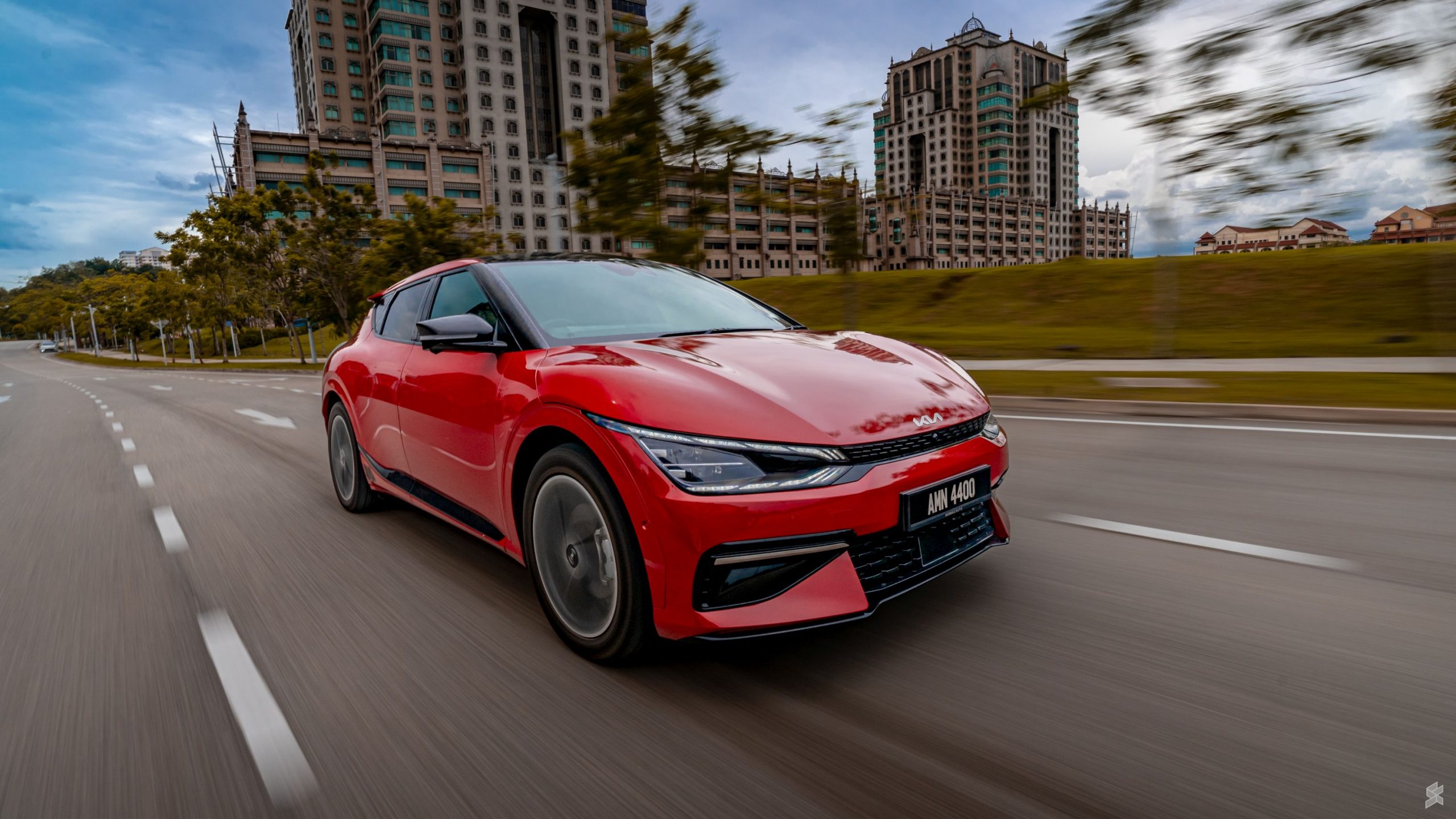
Both the Kia EV6 and the Hyundai Ioniq 5 are currently the best EVs you can get for around RM300,000. The Kia EV6 GT-Line currently retails for RM300,668 on-the-road without insurance which comes with a 5-year warranty. Meanwhile, the Hyundai Ioniq 5 Max 2023 is priced at RM270,408 and you need to add on RM10,000 to get the extended 5-year warranty. However, it is worth highlighting that the EV6’s battery gets a 7-year or 150,000km warranty while the Ioniq 5’s battery gets a longer 8-year or 160,000km warranty in Malaysia.
In terms of looks, I still like the Ioniq 5’s futuristic boxy design, especially in its matte paint job. However, considering the bigger battery, driver-oriented interior, better ride and extra convenience features, the Kia EV6 is a much better proposition despite having the RM20,000 higher price tag.
Even if you compare the EV6 against other premium offerings such as the Mercedes-Benz EQA, Mercedes-Benz EQB, BMW iX3, BMW iX or even the grey-imported Tesla Model Y, you’ll be hard-pressed to get the same amount of tech, performance and additional features including Vehicle-to-Load and remote parking assist for the money. On top of that, the EV6’s design just stands out and the rarity of it on Malaysian roads still provides a sense of exclusivity at the moment.
If you’re looking for an EV6 with supercar levels of performance, there’s a GT version which isn’t available in Malaysia yet. The EV6 GT produces 576hp and it can do 0-100km/h in just 3.5 seconds.
0 comments :
Post a Comment